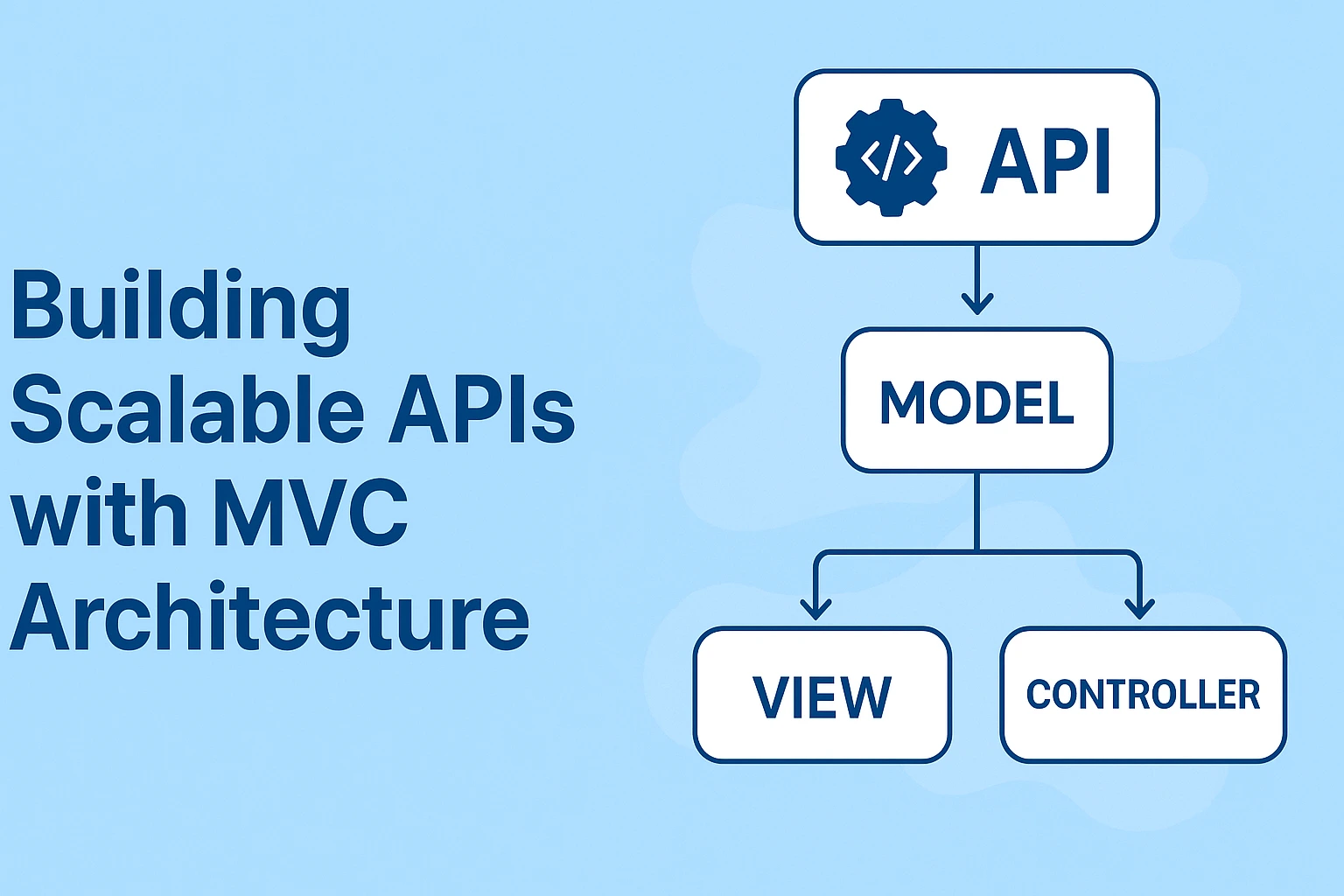
How a BDE Connects Business Vision With Technology
How a BDE Connects Business Vision With Technology Kumkum Kumari 21/11/2025At Speqto, we work with organizations that are constantly evolving entering new markets, scaling operations, or […]


At Speqto, we believe APIs are the backbone of every successful digital product. Whether it’s powering a mobile application, connecting enterprise systems, or enabling real-time data exchange, APIs must be built with reliability and scalability in mind. To achieve this, we adopt the MVC (Model–View–Controller) architecture, which allows us to create clean, structured, and future-ready APIs for clients across industries.
When APIs are built without structure, they quickly become difficult to maintain as projects grow. The MVC pattern prevents this by separating your code into logical layers. The Model manages data, the Controller handles requests and responses, and the Service or View layer contains business logic or presentation details. This separation ensures that APIs remain easy to scale, debug, and extend—even in large, complex systems.
Each part of the MVC architecture has a single, focused responsibility. The Model deals with database interactions, the Controller handles HTTP requests, and the Service layer executes business rules. This separation reduces confusion, keeps your codebase organized, and makes collaboration between developers more efficient. For instance, a backend developer can focus solely on models while another team member enhances services without stepping on each other’s toes.
Modern applications need to scale fast. With MVC, scaling is simple—new features can be added without rewriting the entire system. For example, if you need to add payment gateways, you just extend the payment model, write a new controller method, and add corresponding service logic. Existing modules remain untouched, making the entire development process smooth and cost-effective.
Testing is a critical part of API development. MVC makes testing easier by isolating concerns. You can write unit tests for models to verify database logic, while integration tests can be run against controllers. This modularity speeds up debugging, reduces human error, and ensures consistent reliability across every release.
With a clean MVC structure, new developers can understand the project layout quickly. Instead of wasting time searching for where business logic or routes are defined, they can immediately navigate to the right folder. This reduces onboarding time and accelerates project delivery.
Security is crucial for any API. By implementing authentication, authorization, and validation as middlewares within MVC, we ensure that every endpoint is protected. Sensitive business logic is handled in services, while controllers remain lightweight and less prone to vulnerabilities. This layered approach keeps your APIs secure and compliant with industry best practices.
At Speqto, our API projects follow a professional structure with clearly defined layers:
/api/v1/users or /api/v1/orders.Here’s a simplified folder structure we commonly use:
/controllers userController.js orderController.js /models userModel.js orderModel.js /services userService.js orderService.js /routes/v1 userRoutes.js orderRoutes.js /middlewares authMiddleware.js /utils responseHandler.js app.js index.js
This structure ensures consistency across all projects, making development, debugging, and scaling straightforward.
Let’s say we’re creating a simple User API:
POST /users or GET /users.This layered approach keeps the project well-structured and ensures that future developers can easily extend functionality without breaking existing code.
To make the most of MVC, we follow these best practices:
/api/v1) for backward compatibility.By following the MVC architecture, Speqto delivers APIs that are:
APIs are the backbone of today’s digital ecosystem, and their success depends on a well-structured foundation. By leveraging the MVC architecture, Speqto ensures that every API is reliable, scalable, and future-ready. Whether you are building a startup MVP or scaling an enterprise platform, our MVC-based approach guarantees long-term stability and growth.

How a BDE Connects Business Vision With Technology
How a BDE Connects Business Vision With Technology Kumkum Kumari 21/11/2025At Speqto, we work with organizations that are constantly evolving entering new markets, scaling operations, or […]

Apache JMeter Demystified: Your 7-Stage Blueprint for a Seamless First Performance Test
Apache JMeter Demystified: Your 7-Stage Blueprint for a Seamless First Performance Test Megha Srivastava 21 November 2025 In the intricate world of software development and deployment, ensuring a robust user experience is paramount. A slow application can quickly deter users, impacting reputation and revenue. This is where Apache JMeter emerges as an indispensable tool, offering […]

STRIDE Simplified: A Hands-On Blueprint for Pinpointing Software Threats Effectively
STRIDE Simplified: A Hands-On Blueprint for Pinpointing Software Threats Effectively Megha Srivastava 21 November 2025 In the intricate landscape of modern software development, proactive security measures are paramount. While reactive incident response is crucial, preventing vulnerabilities before they become exploits is the hallmark of robust software engineering. This is where threat modeling, and specifically the […]

From Static to Streaming: A Practical Developer’s Guide to Real-time Applications Using GraphQL Subscriptions
From Static to Streaming: A Practical Developer’s Guide to Real-time Applications Using GraphQL Subscriptions Shakir Khan 21 November 2025 The Paradigm Shift: From Static to Streaming Experiences In an era where user expectations demand instant gratification, the web has rapidly evolved beyond its static origins. Today, a modern application’s success is often measured by its […]

The TanStack Query Edge: Deep Dive into Advanced Caching for Optimal Application Speed
The TanStack Query Edge: Deep Dive into Advanced Caching for Optimal Application Speed Shubham Anand 21 November 2025 In the relentless pursuit of seamless user experiences and lightning-fast web applications, data management stands as a formidable challenge. Modern front-end frameworks demand intelligent solutions to handle asynchronous data, and this is precisely where TanStack Query (formerly […]